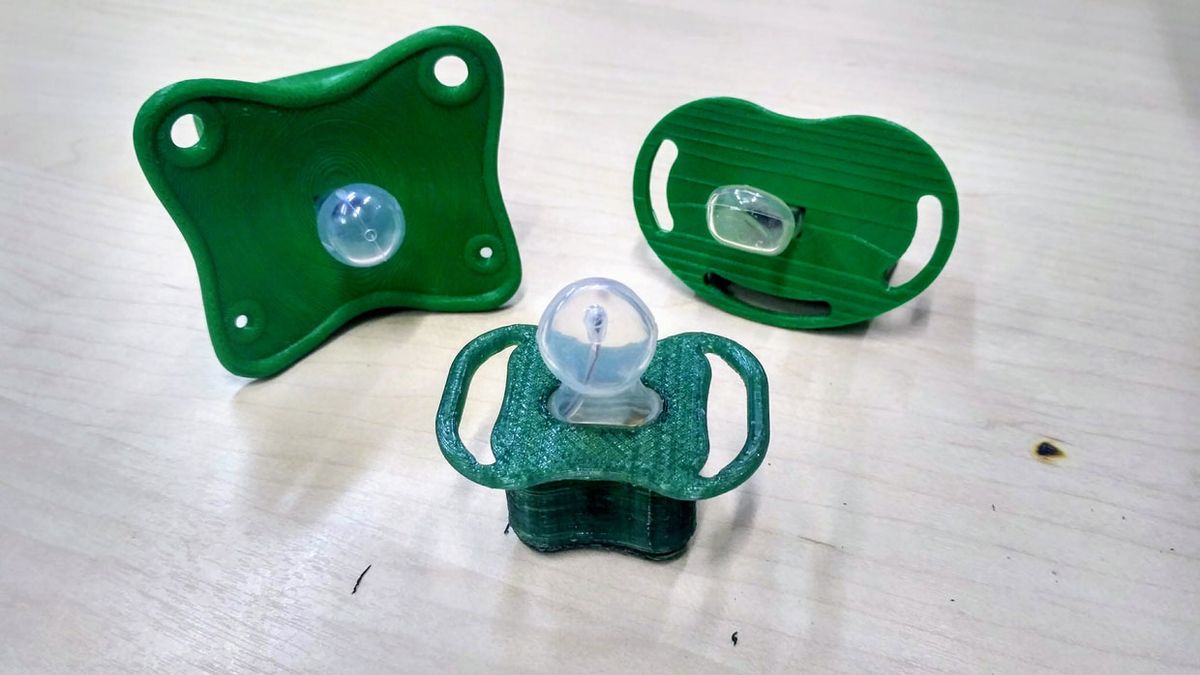
THE INSTITUTEThree IEEE student members won the 2017 Maker Project contest for their Bubu Digital project. The electronic pacifier measures a child’s body temperature. It can detect illnesses early, and it has the potential to reduce child mortality rates.
IEEE Student Members Adjamilton Medeiros de Almeida Junior, Rychard Nunes Guedes, and Júlio Cézar Coêlho Barbosa Torquato from the Federal Institute of Education, Science, and Technology of Paraíba share a US $500 Amazon gift card and a video mentoring session with IEEE Senior Member Tom Coughlin, past director of IEEE Region 6 and chair of the IEEE Public Visibility committee. The project was selected based on its originality, innovation, and benefit to humanity.
More than 300 engineers from around the world entered a video or photo of their invention and a short description of the technology. Projects had to be focused on social responsibility.
The Institute interviewed Guedes to learn more about the project, how he and his colleagues got the idea for the pacifier, and challenges they faced.
Tell us about Bubu Digital.
The pacifier is based on the concepts of the Internet of Things and cloud computing. It’s embedded with low-cost microcontrollers and sensors that measure body temperature. The reading is sent via a Wi-Fi-connected chip to a mobile app. When the temperature falls outside the normal range or there’s a change in heart rate, an alert is sent. Parents can access the app on any device. They can also use it to document prescribed medications and record their baby’s weight, height, and age.
Photo: Questão de Brio
How did you get the idea to create an electronic pacifier?
While an exchange student studying computer science at Miami Dade College, in Florida, Junior learned that infant deaths were still a worldwide issue and decided to address the problem.
When he returned to Brazil, he continued his research into this topic and concluded the majority of illnesses that affect children are related to fever. If a child’s body temperature was better monitored, illnesses‑like the flu, dehydration, and hypothermia‑could be detected more quickly. Acting on this information, Junior invited Torquato and myself to join him in designing a pacifier.
We don’t have any of our own children yet, but we have a passion to help those who are defenseless and protect the future generation.

Did you have any setbacks with the design?
We needed to create a small and lightweight prototype so kids wouldn’t notice the difference between a regular pacifier and Bubu Digital. This was a major challenge because as students we don't have access to the tools and technology needed to build single integrated circuits.
Another challenge was how to market our idea, because we are only students, and sometimes we aren’t taken seriously. However, winning the IEEE Maker Project contest will boost our credibility.
What advice would you give to your fellow makers?
Believe in yourself. Self-confidence is important, and that’s what keeps you on your toes. Don't give up easily, no matter how hard things may seem. And listen to feedback. Sometimes a second opinion can help you take your ideas to the next level. But don't forget it’s your project, so you are the one who makes the final decisions.
What’s next for your team?
Winning a competition like this will put us in a position that was unimaginable months ago. The prize money will go toward improving Bubu Digital. The project will help us build our careers, create our own company, and further pursue our education.
How has IEEE helped you in this endeavor?
With IEEE’s mission in mind, we’re empowered as students and researchers to tackle our goals head-on. The organization has connected us with inspirational people who encourage us to become more involved and network with others.
We met Life Fellow Roberto de Marca, 2014 IEEE president, who visited our university, and Member Natalia Raposo, who introduced us to the opportunities the organization provides for young professionals.



